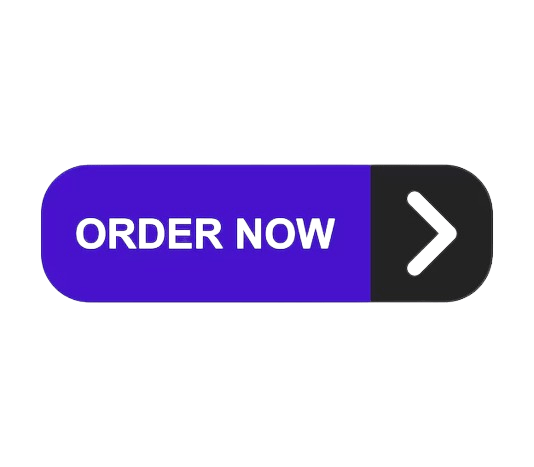[ad_1]
Mental toughness is regarded as a key performance asset for athletes. It is understood by those in competitive sports as the ‘ability to sustain attention on the task at hand while under pressure, as well as in the face of distraction’. Athletes are frequently offered the opportunity to acclimate themselves to sources of external distraction, but what about internal distraction?
As a yogi I’ve had a meditation practice for a while. For someone who didn’t do much of it before my teacher training, there were stages in my experience of forming the habit. Like anything, your brain doesn’t want to do something new. After a period of discomfort and getting easily distracted, I slowly started to notice the benefits – the best way of describing it was that I felt mentally lighter, like a load had literally been taken off. I will specify that it took longer to feel that sense of lightness ‘in the moment’ – but the way it translated to an overall sense of mindfulness was more obvious.
In the same vein, as athletes we learn to ‘trust the process’ – the work itself gives us an opportunity to make gradual improvements.
As an athlete and coach, I’m always interested in the purpose of something and how it can be effectively integrated as a ritual.
In addition I look for ways of setting an athlete or client up for success within their existing list of demands around their training or sport – if performing at your best is the goal, the steps toward it need to be smart and achievable.
The truth is that a discipline in breath work doesn’t have to be time consuming, but – and I will delve into this further below – the science shows it takes time to see the results.
Luckily for me there is a ton of peer reviewed study to support what was once seen as ‘unscientific’.
The first thing to consider is ‘do I primarily breathe out through my mouth or nose?’ A lot of us naturally exhale through the mouth – looking at this through the lens of the autonomic nervous system, our exhale is responsible to a large degree for how relaxed we are.
Renowned breath researcher and author of ‘The Breathing Cure’ Patrick McKeown states that while a number of breath practices use mouth exhalations, this is in fact a stressor. Exhaling through the nose by its nature encourages a more prolonged breath. He works with a number of elite athletes, focusing on achieving an optimal breathing ratio at rest (1:1.5), with a .5 longer exhalation.
I believe something like this can begin to happen on its own when we start to work on attentional control and body awareness (follow along with my meditation video below).
The ‘catch’ whilst beginning a meditation journey is that it can in fact hinder pe
Mental toughness is regarded as a key performance asset for athletes. It is understood by those in competitive sports as the ‘ability to sustain attention on the task at hand while under pressure, as well as in the face of distraction’. Athletes are frequently offered the opportunity to acclimate themselves to sources of external distraction, but what about internal distraction?
As a yogi I’ve had a meditation practice for a while. For someone who didn’t do much of it before my teacher training, there were stages in my experience of forming the habit. Like anything, your brain doesn’t want to do something new. After a period of discomfort and getting easily distracted, I slowly started to notice the benefits – the best way of describing it was that I felt mentally lighter, like a load had literally been taken off. I will specify that it took longer to feel that sense of lightness ‘in the moment’ – but the way it translated to an overall sense of mindfulness was more obvious.
In the same vein, as athletes we learn to ‘trust the process’ – the work itself gives us an opportunity to make gradual improvements.
As an athlete and coach, I’m always interested in the purpose of something and how it can be effectively integrated as a ritual.
In addition I look for ways of setting an athlete or client up for success within their existing list of demands around their training or sport – if performing at your best is the goal, the steps toward it need to be smart and achievable.
The truth is that a discipline in breath work doesn’t have to be time consuming, but – and I will delve into this further below – the science shows it takes time to see the results.
Luckily for me there is a ton of peer reviewed study to support what was once seen as ‘unscientific’.
The first thing to consider is ‘do I primarily breathe out through my mouth or nose?’ A lot of us naturally exhale through the mouth – looking at this through the lens of the autonomic nervous system, our exhale is responsible to a large degree for how relaxed we are.
Renowned breath researcher and author of ‘The Breathing Cure’ Patrick McKeown states that while a number of breath practices use mouth exhalations, this is in fact a stressor. Exhaling through the nose by its nature encourages a more prolonged breath. He works with a number of elite athletes, focusing on achieving an optimal breathing ratio at rest (1:1.5), with a .5 longer exhalation.
I believe something like this can begin to happen on its own when we start to work on attentional control and body awareness (follow along with my meditation video below).
The ‘catch’ whilst beginning a meditation journey is that it can in fact hinder performance for a brief period – and this is simply because we’re adjusting to a new habit system. Of course a lot of athletes would be turned off by this idea so it may be worth starting during an off season if you compete.
To support this, Amishi Jha, a researcher at the University of Miami and specialist in the study of mindfulness on high performers, conducted an interesting pre-season study on college football players. They performed 4 weeks of what she classifies as ‘short form mindfulness training’ (she suggests 12 minutes a day – this combines both breathing and visualization techniques). Following the 12 weeks, results showed an overall reduction in reaction times, self-reported mind wandering and levels of anxiety.
Ultimately, studies show that a practice focusing on low abdominal nasal breath positively impacts our metabolic needs.
Breath expert James Nestor talks a lot about breath efficiency – and of course efficiency is a huge priority for most athletes. His research backs up a lot of what Patrick Mckeown states – high volume and ‘over breathing’ takes away from efficiency.
Another point I’d like to touch on is the issue of injuries – in my yoga for athletes training, we looked at the ‘slow drip stress’ caused by the anxiety we get from being injured, taking us from acute to chronic stress levels (despite having a perfectly adequate rehabilitation program).
An additional down regulation program can be a useful management tool in these circumstances.
So think ‘breathe slow, breathe low’ – in other words, through your nose. This means more oxygen with less work.
Like any habit formation, conscious breath work will eventually translate to how we naturally breathe, in and out of the gym.
Follow along with my session below and find me at @themindfulnesscoach_ on IG.
Practice with me online: yoga-for-the-athlete-master-your-recovery.teachable.com
Annika is a yoga expert, mindfulness and life coach. She is a yoga instructor and health coach at the University of Texas, Austin.
rformance for a brief period – and this is simply because we’re adjusting to a new habit system. Of course a lot of athletes would be turned off by this idea so it may be worth starting during an off season if you compete.
To support this, Amishi Jha, a researcher at the University of Miami and specialist in the study of mindfulness on high performers, conducted an interesting pre-season study on college football players. They performed 4 weeks of what she classifies as ‘short form mindfulness training’ (she suggests 12 minutes a day – this combines both breathing and visualization techniques). Following the 12 weeks, results showed an overall reduction in reaction times, self-reported mind wandering and levels of anxiety.
Ultimately, studies show that a practice focusing on low abdominal nasal breath positively impacts our metabolic needs.
Breath expert James Nestor talks a lot about breath efficiency – and of course efficiency is a huge priority for most athletes. His research backs up a lot of what Patrick Mckeown states – high volume and ‘over breathing’ takes away from efficiency.
Another point I’d like to touch on is the issue of injuries – in my yoga for athletes training, we looked at the ‘slow drip stress’ caused by the anxiety we get from being injured, taking us from acute to chronic stress levels (despite having a perfectly adequate rehabilitation program).
An additional down regulation program can be a useful management tool in these circumstances.
So think ‘breathe slow, breathe low’ – in other words, through your nose. This means more oxygen with less work.
Like any habit formation, conscious breath work will eventually translate to how we naturally breathe, in and out of the gym.
Follow along with my session below and find me at @themindfulnesscoach_ on IG.
Practice with me online: yoga-for-the-athlete-master-your-recovery.teachable.com
Annika is a yoga expert, mindfulness and life coach. She is a yoga instructor and health coach at the University of Texas, Austin.
[wpdevart_facebook_comment curent_url=”https://www.brutestrengthtraining.com/performance-enhancement-through-meditation-a-scientific-approach-for-athletic-optimization/” order_type=”social” title_text=”Facebook Comments” title_text_color=”#000000″ title_text_font_size=”22″ title_text_font_famely=”monospace” title_text_position=”left” width=”100%” bg_color=”#d4d4d4″ animation_effect=”random” count_of_comments=”3″ ]
Click here to get Smoothies For Weight Loss discounted price while it’s still available…
[ad_2]


